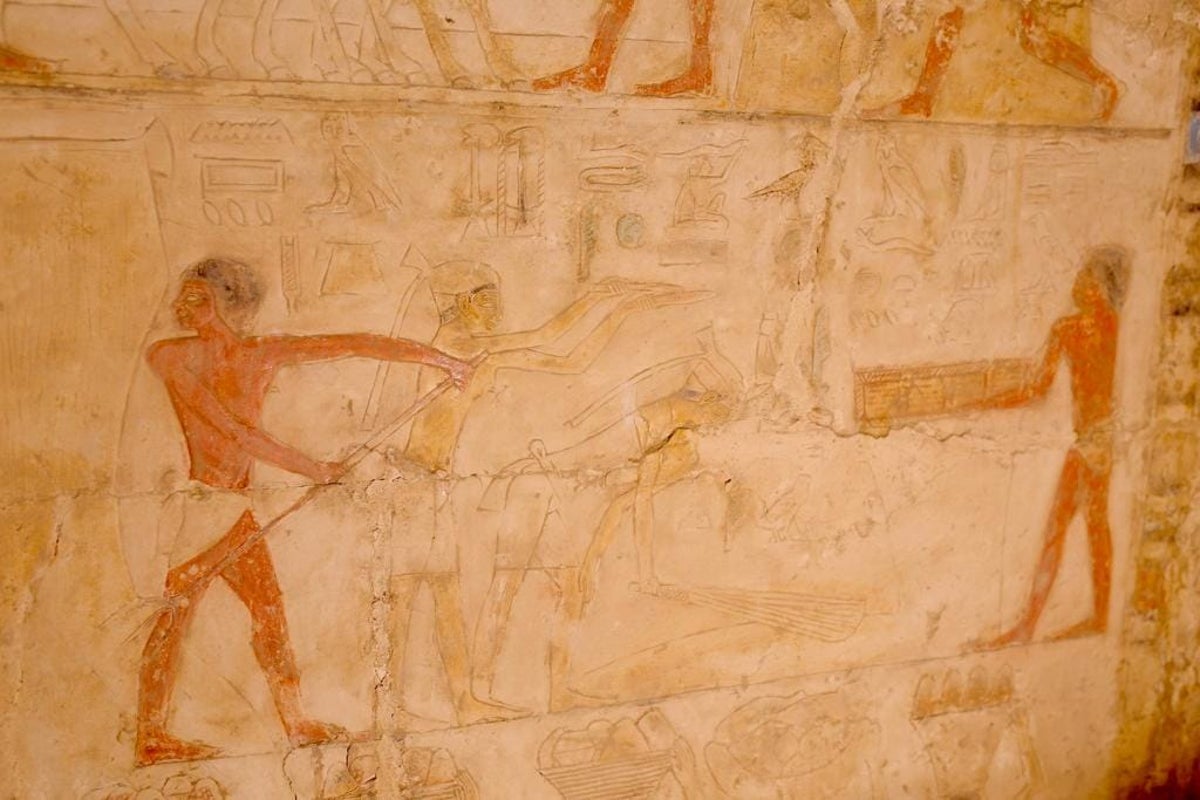Archaeologists unearth ancient Egyptian mummification workshops

The Egyptian authorities have announced the discovery of ancient mummification workshops and new tombs at an archaeological site outside Cairo.
The site was unearthed at the necropolis of Saqqara, which was part of Egypt’s ancient capital of Memphis, a Unesco World Heritage site.
The two ancient workshops unearthed at the site were used to mummify humans and sacred animals about 2,400 years ago, according to Mostafa Waziri, secretary-general of Egypt’s Supreme Council of Antiquities.
Archaeologists say the workshops date back to the late 30th Pharaonic Dynasty (380 BC to 343 BC) and Ptolemaic period (305 BC to 30 BC).
Researchers recovered a number of archaeological finds at the site, including clay pots, ritual vessels, and other items that seem to have been used in mummification.
The ministry of tourism and archaeology noted in a statement that the human mummification workshop is a rectangular building made of bricks divided into a number of rooms.
These rooms were found to contain two stone beds used to rest human bodies for the mummification process, and their dimensions were about two metres long, one metre wide, and 50 cm high.
Researchers also discovered a large amount of linen and black resin at the site, which was most likely used in the embalming process.
The animal mummification workshop was a separate rectangular building made of bricks with mud and stone, divided into a number of rooms and halls, inside which a large number of pottery items of different shapes and sizes were found along with linen, embroidery tools and some bronze tools, the secretary general of the Supreme Council for Archeology said.
Archaeologists also unearthed five stone beds at this site, which were likely used to mummify sacred animals.
By analysing residues of chemicals still left in the jars, they could identify mixtures of resins, tars, and oils, likely used in the embalming process.
Matching the discovered chemical traces with descriptions on the exterior of unearthed containers at the site, scientists could unravel fresh details about the specific materials used in the mummification process.
The tombs discovered at the site were likely for a top official from the Old Kingdom of ancient Egypt, and a priest from the New Kingdom, authorities say.
Egypt’s government has promoted its archaeological findings more widely in recent years in hopes of boosting tourism to the country post-pandemic, and unveiled these new findings at a major press conference this weekend.
“The ministry is keen on developing museums and archaeological sites in Egypt while maintaining its distinctive identity and character, which contributes to improving the efficiency of services offered to visitors and providing them with a unique tourist experience,” said Ahmed Issa the minister of tourism and archaeology.
For all the latest Science News Click Here
For the latest news and updates, follow us on Google News.

